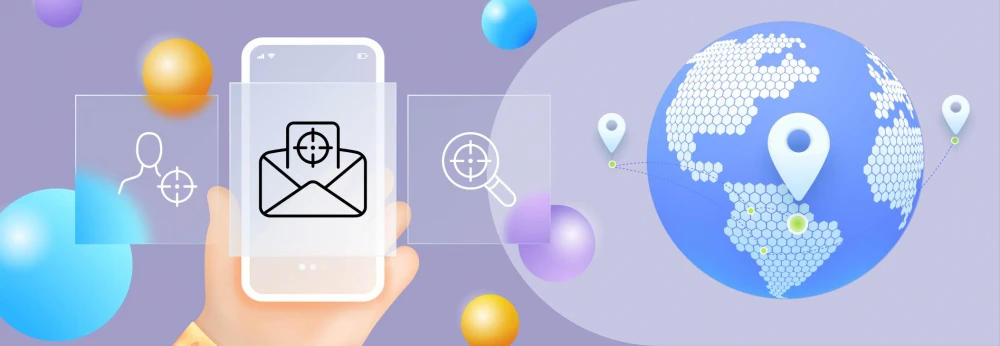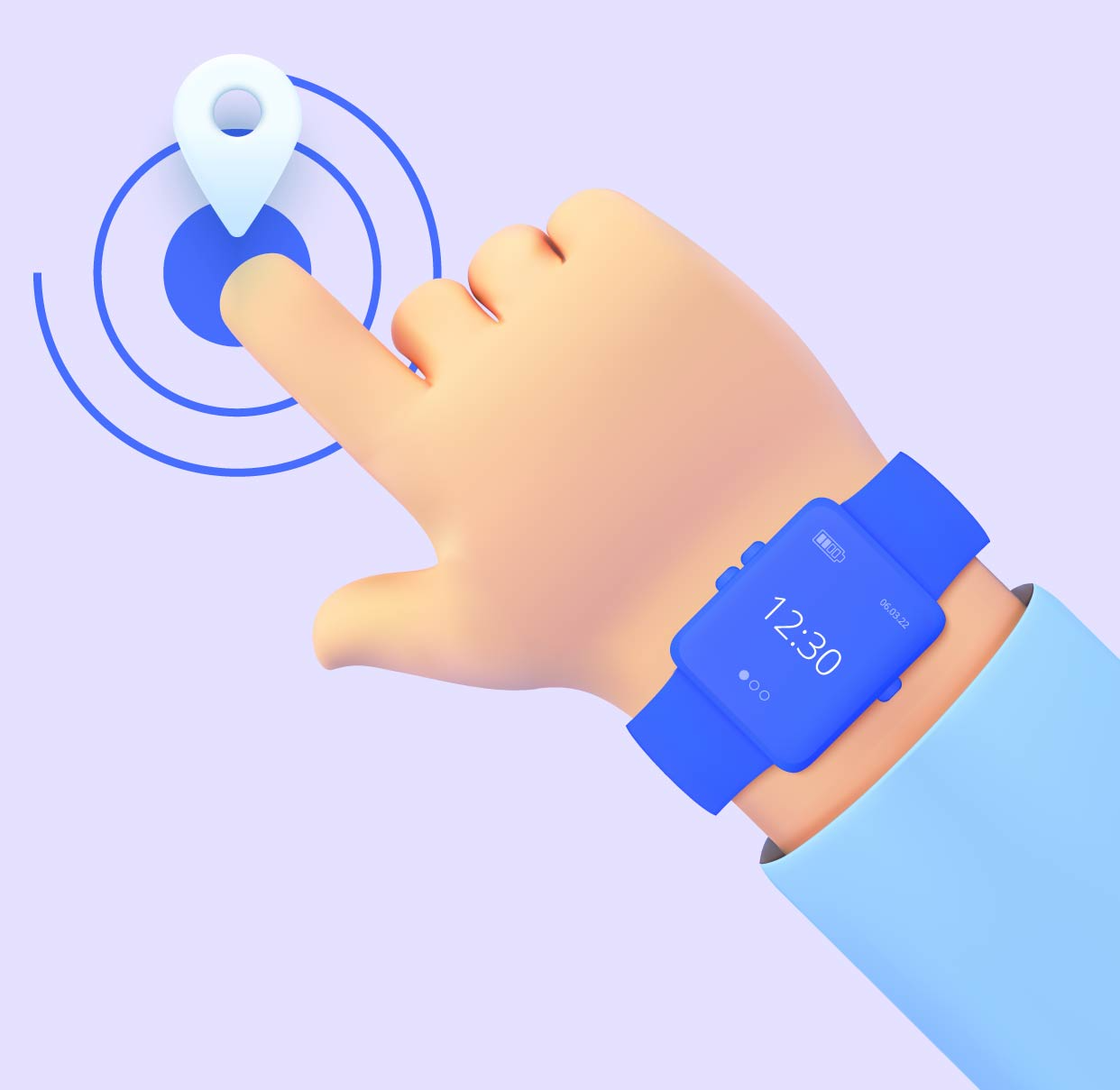.webp?2025-12-17T15:00:29.367Z)
Spotify Wrapped ideas make stats lovable

Location Based Marketing for Your Mobile App
Mark Polskii
Author @ InAppStory
It is not a secret that our phones have a lot of private information about us. For example, you may have noticed that a mobile phone asks you to on the location once you open a certain app. Mobile phones use their user’s locations for various reasons. And one of them is to monetize their apps for the right purposes.
There are a variety of marketing strategies for mobile apps, but if you are looking for a target in a specific location, you should learn about location based marketing. This guide clarifies what location-based marketing is, how and why you should utilize it, and explains its advantages and disadvantages. It will also discuss location-based trends and present some case studies.
What is Location-Based Marketing?
Location-based marketing is about targeting consumers based on their physical location. It allows businesses to reach users on a personal level with online messages.
Location-based notifications are often sent to mobile devices via push notifications, in-app messages, or SMS. An alert might include details about a nearby business's offer of the day or a purchase motivation, such as a discount coupon code.
Types of Location Based Marketing
The development of connected gadgets has essentially enabled location based marketing in recent years. Everything nowadays appears to be connected to the internet - phones, smart devices, watches, and more. Since these gadgets frequently track their owners' movements, there is a lot of location and geographical data available. Marketing teams may use the information gleaned from this data to understand better how to approach consumers and improve their entire experience. Marketers may use location based marketing strategies in a variety of ways:
Geofencing
Geofencing is forming a circle around a location, or a set of locations, that an audience visits to deliver them real-time advertisements and content. When target audiences cross that circle, they become a marketing strategy's active target. This might imply that they receive content, offers, or other forms of communication from the company.
Geofencing location-based strategy uses two methods to accomplish this: radii and polygons. Radius draws a circle that helps understand when the mobile device is located there, which means users visit the place. The problem with this is that it may detect passers-by rather than genuine guests. Polygons highlight the actual structure of the area of interest, adhere to the building's footprints, and are more accurate.
Geotargeting

Geotargeting is the process of building audiences based on visits to real-world locations and points of interest that have been matched in the past. Marketers establish audiences and distribute advertisements and content depending on where their campaigns are most relevant. As an example of location based marketing Singapore, audiences observed at Singapore’s cocktail bars are classified as alcohol drinkers in this country.
Geoconquesting
Geo-conquesting is a strategy for diverting prospects away from competitors' locations by using location based marketing data. Coffee shops, for example, could draw a line around a competitor's area. When a target customer crosses that line, they will receive an offer to users encouraging them to visit the other shop.
Mobile targeting
Marketers use mobile targeting to target customers with adverts on their mobile devices. Since most people want to avoid advertisements, marketers strive to make their ads context-specific, which might be based on time, device, or location.
Reasons to Use Location-Based Marketing
Consumers and marketers alike can benefit from location-based marketing. Marketers may send more focused messages to consumers, increasing awareness and maintaining engagement. The targeted approach of these adverts also means that companies waste less money. On the other hand, consumers are becoming more selective about which brands they would like to get messages from. So they get tailored offers at convenient times, which improves their entire experience. Here are a few more reasons to use location based marketing:
Enhance foot traffic
One of the best aspects of location-based marketing is that it uses your smartphone data to help consumers get the most out of their apps. Before you get too worked up, listen to what we have to say.
The primary goal of marketing is to bring in both old and new clients. As a result, it's reasonable to claim that location based marketing platforms are beneficial since local branding caters to your demands.
Deliver specific ads to a particular target
Marketers may build more relevant, tailored advertising by using real-time location based marketing data. This isn't always limited to a person's actual location. Location data can also influence timing and messages. Location based marketing examples data may reveal that consumers are more likely to engage with an ad when on the train or commuting, assisting marketers in determining when to deliver an ad. Location data might influence copy and creativity. Instead of using generic graphics, marketing teams may use photographs of the city where the target customer resides. Context and relevancy have become critical components of reading and not dismissed communications. These requirements will be satisfied if the marketer uses these real-time insights.
Keep your consumers close to you
Businesses are continuously looking for methods to outperform their competitors. When it comes to location-based marketing, you're not only drawing new customers, but you're also luring them away from your competition.
How Location-Based Marketing Can Improve the Customer Experience
Every marketing strategy gives tools to solve issues, i.e., location based marketing solutions improve customer experience. Marketers can provide a better user experience by targeting them when they are most likely to require the app services. Every personal experience between business and consumer makes their relationship better.
Geotargeting is the process of building audiences based on visits to real-world locations and points of interest that have been matched in the past. Marketers establish audiences and distribute advertisements and content depending on where their campaigns are most relevant. As an example of location based marketing Singapore, audiences observed at Singapore’s cocktail bars are classified as alcohol drinkers in this country.
Geoconquesting
Geo-conquesting is a strategy for diverting prospects away from competitors' locations by using location based marketing data. Coffee shops, for example, could draw a line around a competitor's area. When a target customer crosses that line, they will receive an offer to users encouraging them to visit the other shop.
Mobile targeting
Marketers use mobile targeting to target customers with adverts on their mobile devices. Since most people want to avoid advertisements, marketers strive to make their ads context-specific, which might be based on time, device, or location.
Reasons to Use Location-Based Marketing
Consumers and marketers alike can benefit from location-based marketing. Marketers may send more focused messages to consumers, increasing awareness and maintaining engagement. The targeted approach of these adverts also means that companies waste less money. On the other hand, consumers are becoming more selective about which brands they would like to get messages from. So they get tailored offers at convenient times, which improves their entire experience. Here are a few more reasons to use location based marketing:
Enhance foot traffic
One of the best aspects of location-based marketing is that it uses your smartphone data to help consumers get the most out of their apps. Before you get too worked up, listen to what we have to say.
The primary goal of marketing is to bring in both old and new clients. As a result, it's reasonable to claim that location based marketing platforms are beneficial since local branding caters to your demands.
Deliver specific ads to a particular target
Marketers may build more relevant, tailored advertising by using real-time location based marketing data. This isn't always limited to a person's actual location. Location data can also influence timing and messages. Location based marketing examples data may reveal that consumers are more likely to engage with an ad when on the train or commuting, assisting marketers in determining when to deliver an ad. Location data might influence copy and creativity. Instead of using generic graphics, marketing teams may use photographs of the city where the target customer resides. Context and relevancy have become critical components of reading and not dismissed communications. These requirements will be satisfied if the marketer uses these real-time insights.
Keep your consumers close to you
Businesses are continuously looking for methods to outperform their competitors. When it comes to location-based marketing, you're not only drawing new customers, but you're also luring them away from your competition.
How Location-Based Marketing Can Improve the Customer Experience
Every marketing strategy gives tools to solve issues, i.e., location based marketing solutions improve customer experience. Marketers can provide a better user experience by targeting them when they are most likely to require the app services. Every personal experience between business and consumer makes their relationship better.

Hyperlocal marketing methods use location based marketing data and time-sensitive insights to engage customers. Marketers can target a smaller group of customers in a specific town or even a specific block. This allows for more tailored marketing that is also easier to track. Furthermore, because personalization is crucial in today's marketing, hyperlocal campaigns are more manageable to tailor to specific populations than massive, nationwide initiatives.
Hyperlocal marketing was a staple before significant transportation systems. Because of the internet and television reach, marketers could reach people who were not in their immediate vicinity. While embracing new digital improvements, marketing teams are resorting to this technique.
Examples of Brands Using Location Based Marketing
Even though a lot of businesses use this strategy, there is some great location based marketing case studies:
Adidas
Adidas incorporated location-based marketing into their brand by using location extensions in their search advertising. This encouraged those who saw the commercials or downloaded the app to go to an Adidas store near them. As a result, the ROI increased by 680 percent.
Whole Foods
Another two location based marketing companies that made good results are: Whole Foods and Thinknear. Whole Foods, a grocery operator, teamed up with Thinknear, a location-based marketing business, to boost post-click conversion rates. With this campaign, geofencing was helpful because it picked up several retail locations and displayed special discounts to nearby mobile users.
When done near rival businesses, geo-conquesting helps influence the direction of customers' purchasing decisions by amplifying their effect on shoppers.
Toyota
Toyota opted to integrate its CPV model with location targeting and target audience to improve customer visits and sales. Their campaign's geolocation marketing strategy resulted in 1,200 visits to local dealerships in one month.
Conclusion
In conclusion…

Location-based marketing is a method used by businesses to enhance sales income and brand exposure. It assists companies in better understanding their clients by allowing them to host promotional events depending on geography or proximity.
Despite its benefits, location-based marketing has several disadvantages, particularly for non-smartphone consumers. As a result, it's critical for businesses to target the correct demographic. Companies may reach out to customers on a more personal level by advertising locally.
It has been a successful approach for businesses since it allows them to reach a large number of consumers and provide a positive user experience.

